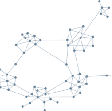Leading the Way: Inspiring vs Empowering
Final Part: Research and insights deep dive on the topics keeping leaders up at night, from the team at Magnetic. we’re shining a light on employee tensions — check our part 1, part 2, part 3 and part 4 of our Thought Report before you dive into part 5 below. (Rather view the Thought Report as pdf? Download your free copy here.)
In many respects, this is the most complex and crucial issue of all. Inspired leaders will motivate, encourage and empathise. But that’s not enough. Modern leaders must also empower and respect the freedom of employees. And there lies the trickiness: how can you be ‘hands-on’ and ‘hands-off’ at the same time?
The balance, at least on the face of it, seems to be off. The idea of ‘quiet quitting’, the notion of doing the bare minimum at work, has hit the zeitgeist with some force, possibly an evolution of a similar Chinese phenomenon of ‘Lying Flat’. One TikTokker describes it as ‘not outright quitting your job but…quitting the idea of going above and beyond it’. In a sinister correlation with this apathetic mentality is the reverse concept of ‘quiet firing’, or the action of leaders overloading their employees with additional responsibilities and high demands, precipitating an inevitable quitting. On one side of this insidious coin is the inability to care, on the other, the toxic behaviour of managers that make the lives of their employees hell. Neither is a good look.
It should be noted that actual statistical evidence for these phenomena does not exist. A Gallup poll of thousands of American workers has found that employee engagement in 2022 was higher than in any year between 2000–2014. ‘What the kids are now calling “quiet quitting” was, in previous and simpler decades, simply known as “having a job”’ a recent article from the Atlantic summarised. A big sigh of relief then, nothing to worry about.
Not so. Even if the numbers don’t support it, the proliferation of the terms ‘quiet quitting’ and ‘quiet firing’ indicate a deep and negative emotional shift in the workplace. These descriptive labels have caught fire because leadership is failing to inspire people, and an expectation is being set that your boss will be nasty, dictatorial, and unmotivating. Conversely, it becomes a useful catch-all for managers to blame their lazy workers. The scene is set for fruitless, combative relationships between employees and employers. Everyone goes into work in bad faith.
The very existence of quiet quitting and firing should be a call to action to consider a problem that exists and has existed for years, well before and well after any TikTok trend, the problem of compelling and motivating modern leadership. And this conclusion uncovers the first step in tackling it: good leaders should avoid hiding behind misleading phrases when characterising their relationships with their employees. Saying that your employee is ‘quiet quitting’ is far easier than asking the hard questions. Is my leadership style right for this person? Have I been an open source of communication they can trust? Has my conduct in recent weeks had an impact on my team’s morale? Creating loyalty is tough, but self-reflection can be a blessing.
Hybrid hasn’t helped. When your team is dispersed, how can you adapt your leadership style without carrying over bad habits? A remote worker doesn’t want to be distrusted, constantly surveilled through incessant notifications, any more than they would want to be pestered and micromanaged by their boss in the office.
Leadership in the digital age asks that certain qualities such as deep domain expertise, decisiveness, authority and short-term focus give way to softer skills and a number of agile leadership competencies will be needed to navigate the hybrid workplace; humility, adaptability, purpose, communication and empowerment.
In many ways, the spilling out of work into our homes and personal lives has warranted a more light touch, human perspective on leadership focusing on a more intimate understanding of employee wellbeing, and a view of productivity based on outcomes, not how long someone is sat by a desk. This is hard, and hasn’t become easier since restrictions were lifted. Organisations need to consider the importance of capability training and empowering managers to exemplify wellbeing. It should not be limited to pointing to the right resources, managers need to be capable of having regular and honest conversations, with deliberation. Managing the day-to-day shouldn’t feel like it requires constant supervision. Leveraging useful tools and technology and experimenting with rituals that work well will enable teams to work with trust and autonomy more effectively.
A case study from the Magnetic vaults: PATRIZIA AG
PATRIZIA AG is one of Europe’s largest real asset investment managers, with more than €56 billion in assets under management across the continent. Our challenge was to help this growing company shift from a pan-European to a global organisation. The goal was to nurture emerging talent, develop their capabilities so they could help the business adapt in the future, and create a shared definition of what good, inspiring leadership looks like.
Here’s what we did:
- Phase one of our three-phase approach began with a deep dive into the needs and challenges of the business, designing a bespoke programme to tackle them. A key part was ensuring the Executive Team understood and could create the right conditions for innovation and design thinking.
- In phase two, we delivered the bespoke programme to the first emerging talent cohort.
- In phase three, we measured and reviewed the success of this first group so that this could become a repeatable model.
- The Patrizia Futures Programme successfully launched in Q1 2021, equipping the first group with the tools and techniques they need to create change, break down boundaries and solve problems. This was more than a one-off training programme; it was the start of a new way of working for the company.
We are at a fork in the road when it comes to leaders and their relationships with employers. Current macroeconomic crises have exacerbated worrying trends that reveal a picture of the employee experience that is not fit for function.
This might sound scary, terrifying even, but as with all big and scary things, the opportunity for innovation and reinvention are legion. Where should we start? Well, here’s what we conclude from the discussion above:
- The pandemic has changed the world of work forever. And despite what we might naively hope, there’s no going back.
- The problem we’re trying to solve is not “making hybrid work”. Businesses must create a new employee experience, and have to innovate fast to meet rising expectations.
- We shouldn’t assume the office experience will be great. We need to put in the work to coordinate compelling pull factors that can, at the same time, make our cultures stronger.
- Every organisation is different, and so is every employee. A daunting idea, but one that compels you to empathise with your employees, their needs and values. Treat you people like your customers — with care and consideration.
- Our purposes are long term goals that cannot waver in times of crises. The questions of social equality and the future of our planet are too big to quit. And they’re what inspires our people.
- The leader of tomorrow is adaptable and empathetic, trusting their people to be their best wherever they are. They care about outcomes delivered, not hours spent. Leadership is dead, long live leadership.
- Creating a brilliant, new, modern, forward looking employee experience is a balancing act, so map out the potential unintended consequences of your decisions, iterate on findings, and don’t be afraid of getting things wrong. That’s how innovation works.
Good luck, your people are counting on you.
This is the final part in our series of articles breaking down this huge topic. Follow us for more on the four key tensions. (Rather view the full Thought Report as pdf? Download your free copy here.)
Magnetic is a design and innovation company that helps design better futures. We’ve worked with global businesses to build capabilities, products, services and transform organisations. To find out more, get in touch: hello@wearemagnetic.com.







